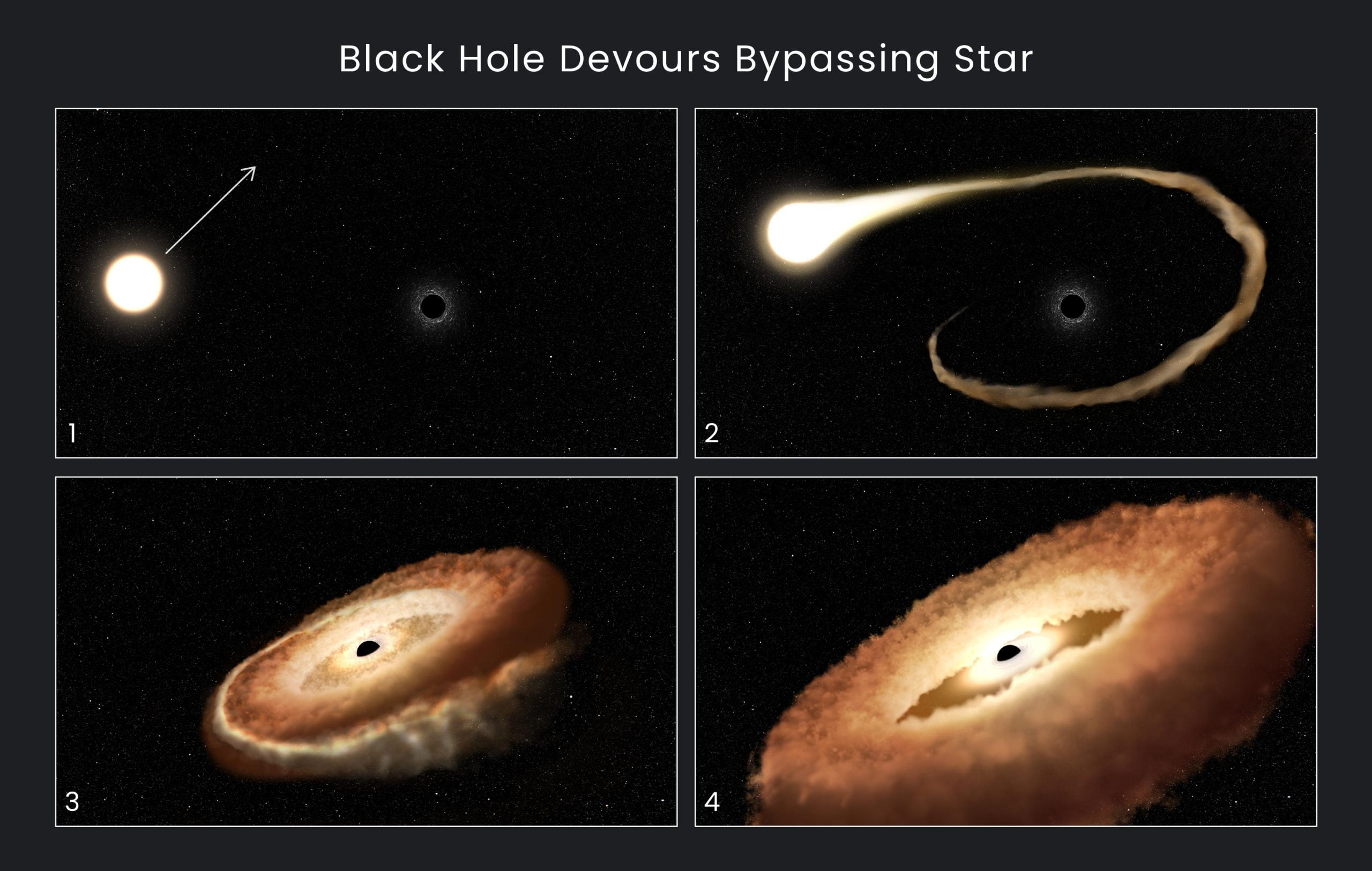The gravitational pull from a black hole is so strong that light can get lost in it. This strange feature of black holes surprises everyone who is interested in science. Even if a star is in the wrong place at the wrong time, it will be lost in the black hole and never come out.

Hubble astronomers observed a high-energy beam 300 million light-years away. With the Hubble telescope, scientists can see that a star has been pulled in by the black hole’s gravity.
The destroyed star disappears into the black hole. Then a ring of gas forms there. The star was very close to the black hole at that time. As the star approaches, the black hole’s strong gravity pulls it towards itself.
Then a ring of gas is formed by strong radiation. NASA astronomers were able to record the final moments of the star’s collapse with the Hubble Space Telescope. Understanding such properties of black holes is more complicated.
The balance seems to be maintained by the gravitational pull of nearby objects towards themselves and distortion. Scientists will now try to figure out how the star got so close to the black hole.
After the star was destroyed, scientists found signs of X-ray light from the warm temperature around the black hole. When any such transient phenomenon occurs in space, scientists observe it. It is quite difficult to observe the initial part of such events. Because initially, that area was very bright.
Scientists have tried to understand the sequence of events from beginning to end. Scientists will try to explain the phenomenon with the models they have. The star’s demise was discussed in detail at the 241st meeting of the American Astronomical Society in Seattle, Washington. NASA and the European Space Agency are currently working together on the Hubble Space Telescope project.
